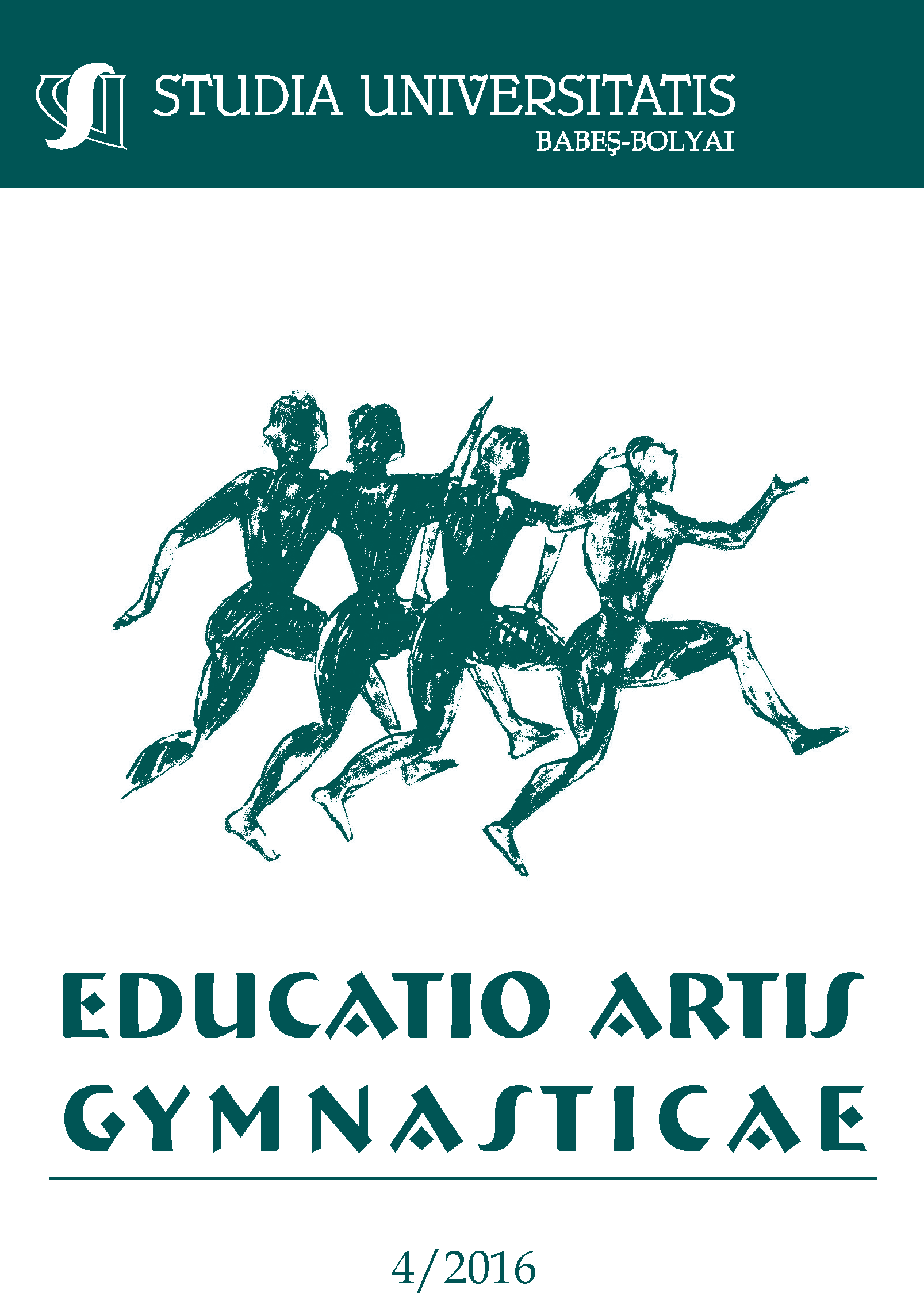IMPACT OF TEACHING HANDBALL ON THE IMPROVEMENT OF TARGET ACCURACY OF STUDENTS IN CONSIDERATION FOR THE IMPACT ASSESSMENT OF THE PROJECT “HANDBALL AT SCHOOL”
Keywords:
handball, every-day physical education, target accuracy, primary school childrenAbstract
A survey programme was organised by us in the autumn and spring semesters of 2015/ 2016 academic year aiming to prove that project “Handball at School” has positive effect on target accuracy and performance stability results of students, as well as their precision of technical implementation. 183 students were examined (2nd-4th grades) who had two sponge-handball lessons a week out of their 5 physical education lessons. To examine target accuracy two tests were applied. One is “throwing at a target from throwing straddle without previous swing” performed by the students by age-specific sponge-handball from distances corresponding their age. The aim was to hit the small box five times at a time from upper throw. After having a rest, they had another five trials. Shooting surety, performance time and precision of technical implementation were registered. The other test for checking target accuracy was “throwing at a target from throwing straddle with previous swing”, where the difference from the previous one was that they had to run two meters forward, take the ball and run back with it to the sign-line the distance of which was the same as the one in the previous test. At this test, also surety, performance time and precision of technical implementation of upper shot were noted. Four groups were formed from the children in accordance with the time they have spent on training: the first one was that of the children not doing any sport regularly apart from the activity at the PE lessons, so their training past is 0 year, the second group were the children having done sports regularly for one year, their training past is 1 year, the third group was the children with 2 years past, while the fourth group was the ones with 4 years of training past. It was stated that target accuracy results or some other parameter (score, technical implementation, implementation time) improved in all the four groups by the spring check compared to the autumn one indicating the benefit of the programme after half a year.References
A nemzeti alaptanterv szerepe a tartalmi szabályozásban. Retrieved: 2004. December 20 from: http://www.om.hu/letolt/kozokt/nat2003/kr/02_bevezetojavveg.rtf.
Bakonyi, F. (1969). A testnevelés mennyiségének és minőségének befolyása a sportolási igény alakítására. A testnevelés tanítása. Budapest, Művelődésügyi minisztérium módszertani folyóirata 5, 3, 75‒78.
Bakos, F. (1974). Idegen szavak és kifejezések szótára. Akadémiai Kiadó-Kossuth Könyvkiadó. 210- 729. p.
Juhász, J., Szőke, I. O., Nagy, G., & Kovalszky, M. (1980). Magyar Értelmező Kéziszótár. Akadémiai Kiadó. Bp. 1115-1992. p.
Müller, A., Rigler, E., & Derzsy, B. (1999). A rúgáspontosság alakulása non-specifikus edzés hatására. (publikáció megjelenése) III. Országos Sporttudományos Kongresszus kiadványkötetében, Mónus A. (Ed.), Kiadó: Magyar Sporttudományi Társaság, 74-77. p.
Müller, A. (2000). Accuracy of Throws as a Result of Non-Specific Training, The 14 th International Congress on Sport Sciences for Students – 2000 (Nemzetközi Tudományos Diákköri Konferencia, Phd szekció), Bp. április 13-14.
Müller, A. (2004). Mozgásvizsgálatok a mozgásegyenletesség és a teljesítmény-konstancia példáján. Disszertáció. Nevelés és Sporttudományok. 2004. Semmelweis Egyetem Testnevelési és Sporttudományi Kar Doktori Iskolája, Bp. Retrieved from: http://phd.semmelweis.hu/mwp/phd_live/vedes/export/mulleranetta-d.pdf
NAT (2012). Új Pedagógiai Szemle 1- 3, 30 -256.
Nádori, L. (1989). A gyors és pontos mozgás jellemzői. A Testnevelési Főiskola Közleményei. 1.sz. 45-49. p.
Nagy, GY. (1978). Pszichológia a gyakorlatban. Cselekvéstanulás mozgástranszfer. Akadémiai Kiadó. Bp. 9-68. p.
Rigler, E., & Zsidegh, M. (1985). A mozgásreprodukálás pontosságának vizsgálata. A testnevelési Főiskola Közleményei. 1. sz. 129-151. p.
Rigler, E. (1987). Az emberi mozgás reprodukálhatósága és teljesítményállandósága. (Részlet a szerző kandidátusi értekezéséből) A Testnevelési Főiskola közleményei. 1. sz. Melléklet. 3-96. p.
Schmidt, R. A. (1996). Mozgáskontroll és mozgástanulás. MTE. Bp. 303-311. p.
Schmidtbleicher, D., Rigler, E. , & Müller, K. J. (1981): A mozgáspontosság vizsgálata a “fekvőtámaszba dőlés” példáján. Testnevelési Főiskola Közleményei. 3. 129-143. p.
Vas, E. (1991). A mozgásvégrehajtás biztonságának vizsgálata ifjúsági röplabdázók nyitása példáján. MTE közleményei. 3. sz. 57-73. p.
Downloads
Published
How to Cite
Issue
Section
License
Copyright (c) 2016 Studia Universitatis Babeș-Bolyai Educatio Artis Gymnasticae

This work is licensed under a Creative Commons Attribution-NonCommercial-NoDerivatives 4.0 International License.



